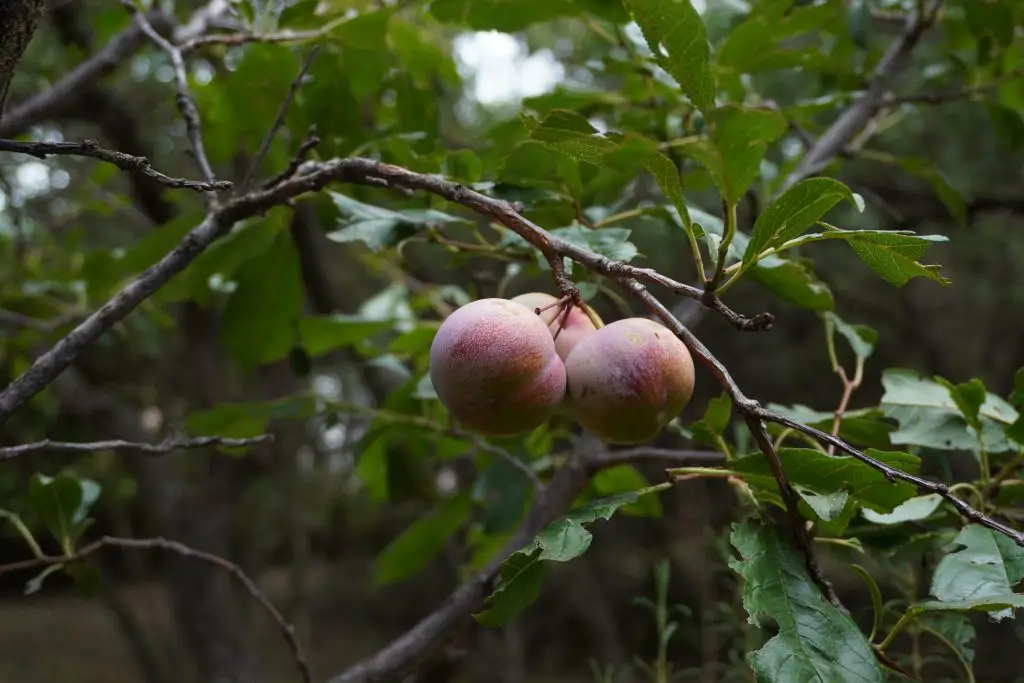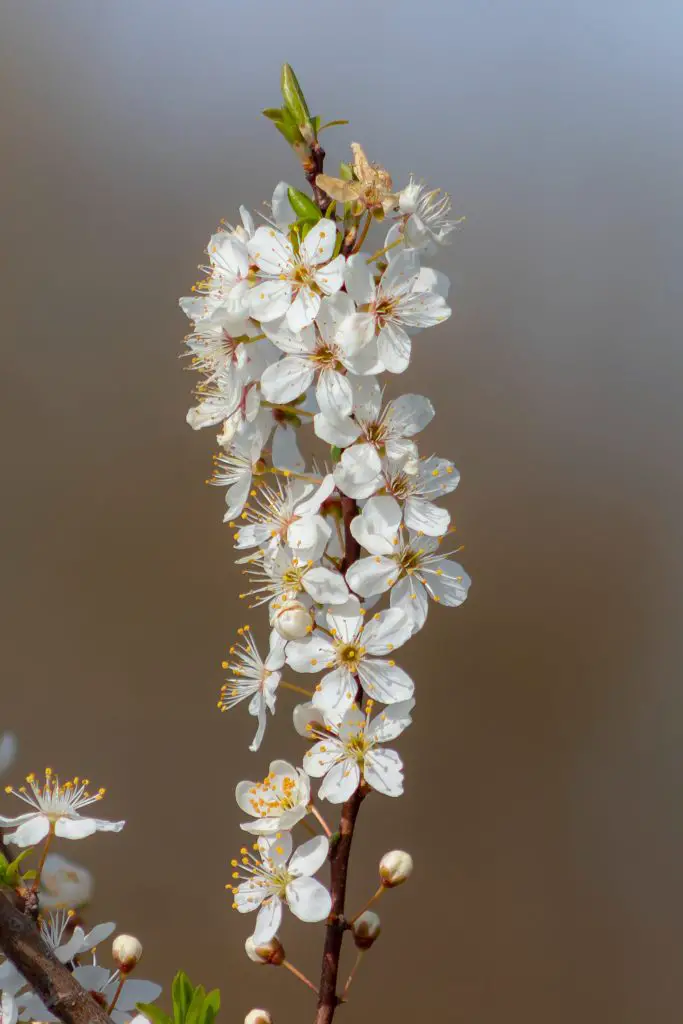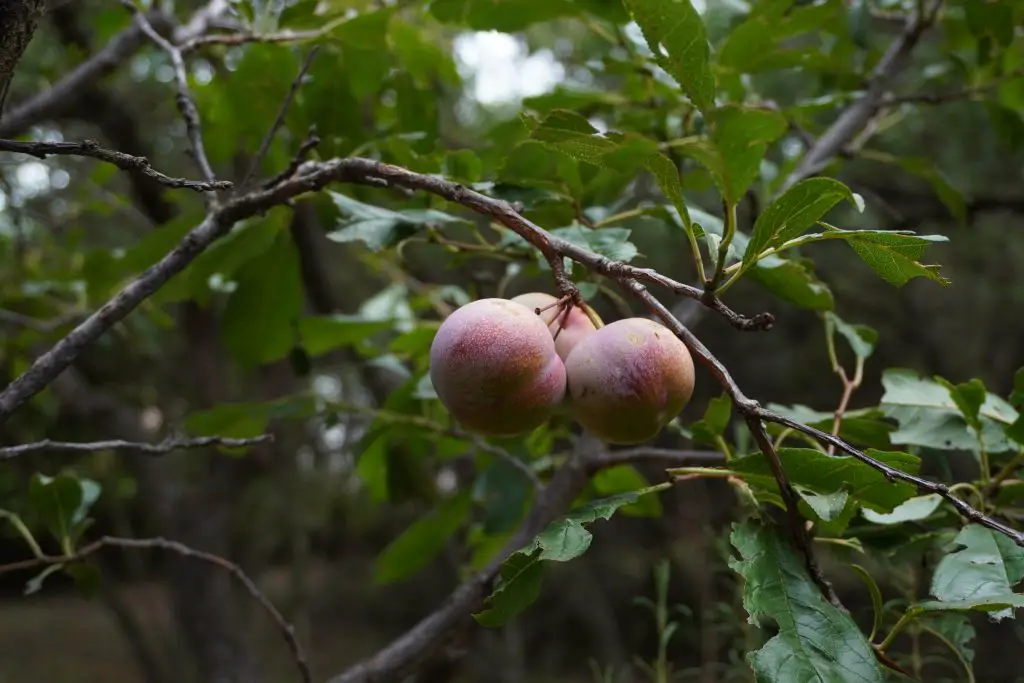How Much Fruit Does A Plum Tree Produce? Plums are a popular stone fruit that is widely available commercially and is also grown by many people in their yards at home. Plums can be classified into two main groups, “Japanese” or “European”. Japanese varieties generally produce larger fruit than the European types and are available in red and yellow-fleshed forms.
A single plum tree will typically produce 40 lbs of plums or more on average per year, however, this can vary widely depending upon the type of tree and the particular variety. Japanese varieties tend to have a heavy cropping year followed by a light cropping year whereas European varieties produce a smaller but more consistent crop year on year.
A study published in the Spanish Journal Of Agricultural Research in 2013, which looked at 14 different varieties of Japanese plums, found that the yield of some of the varieties varied from 5 lbs (2.5 kg) in one year to around 90 lbs (40 kg) the following year. Whereas a Norwegian Institute for Agricultural and Environmental Research study, which looked at European varieties, found that the volume produced by the trees progressively increased with time.
Irrespectively of the type chosen most varieties will not produce a decent crop until the tree reaches 3 to 4 years old. This is largely because most fruit is produced on spurs that are at least 2 years old. However, most trees sold to the public are usually 2 years old which means that home gardeners will typically need to wait for 1 to 2 years before seeing a crop.

When planting a Plum tree it is necessary in most cases to plant two trees to ensure that cross-pollination occurs. When selecting trees to plant they need to be of the same type, ie both Japanese or both European. The reason for this is because for successful pollination to occur, the flowering of the two trees needs to occur at the same time.
However, self-fertile varieties, of both European and Japanese, exist that can be planted individually but crops will usually be smaller when planted by themselves. Two of the most common self-fertile varieties are ‘Santa Rosa’ (Japanese variety) and ‘Victoria’ (European variety).
Which is Better Japanese or European Plum Varieties?
Both the Japanese and European Plums have advantages and disadvantages which make them more suitable in different circumstances. As mentioned above the key benefit of European varieties is that they generally provide a more consistent crop year on year than Japanese varieties.
The other significant difference between the varieties is the chill hours. European varieties are generally considered ‘high’ chill varieties whereas Japanese varieties are mainly ‘low’ chill varieties. This difference in physiology can be both an advantage and a disadvantage depending upon the climate you live in.
A limiting factor of the suitability of Plums, and all stone fruit for that matter, in a given location, is the number of chill hours. For Plums to produce a successful crop the tree needs to be exposed to a period of cold, without a sufficiently long period of cold the plant will not produce Plums.
This period of cold, which is sometimes referred to as ‘chill’ hours, is the number of hours the tree is exposed to temperatures below 7°C (45°F). European Plum varieties generally require between 700 and 1,000 chill hours whereas Japanese Plum varieties require 500 to 900 chill hours.
The advantage of European Plum is the increase in chill hours means that the tree can tolerate colder environments than the Japanese varieties. However, Japanese varieties will fruit in warmer conditions than the European varieties.

As a general rule, Japanese Plums are suitable for growing fruit in Zones 4 to 10, while European Plums are suitable for growing in Zones 3 to 9. However, if you need to assess if a particular variety is suitable for the region you live in the number of chill hours can be approximated fairly easily. To calculate the chill hours take the average temperature of the coldest month in your location and compare it to the table below.
Chill Hours Average Temperature For Coldest Month
0 19.7°C (67.5°F) – No Chill
300 15.5°C (59.9°F) – Low Chill
330 15.3°C (59.5°F) – Low Chill
450 14.0°C (57.2°F) – Medium Chill
500 13.6°C (56.5°F) – Medium Chill
520 13.1°C (55.6°F) – Medium Chill
600 12.7°C (54.9°F) – Medium to High Chill
800 10.2°C (50.4°F) – High Chill
1100 7.9°C (46.2°F) – High Chill
1250 0.0°C (32.0°F) – Very High Chill
Another key consideration within a climate, that can affect fruit production, is the occurrence of late frosts which can damage fruiting spurs and flowers affecting the yield. This can influence the choice of trees as studies have shown that Japanese varieties produce flowers almost two weeks earlier than European plum cultivars.
This characteristic exposes Japanese varieties to an increased risk of reduced yield or complete crop failure compared to the European plums in colder locations. To reduce the potential for damage it is advisable to protect the delicate buds and flowers with frost blankets which are available on Amazon. Click here to see the latest price.
How To Plant Plum Trees
If you are planning to add a new Plum tree to your yard it is best to do it in winter when the tree is dormant. At this time of year, trees are available as bare-rooted plants which are significantly cheaper to purchase.
The first step in planting a tree is to select a location. It best to select a warm, sheltered location that gets at least 8 hours of sun a day. If possible avoid locations that are known frost pockets as this will increase the probability of getting hard late frosts.
Once the location has been selected it is important to prepare the soil well by adding add plenty of organic matter such as compost or well-rotted manure. The soil additions should be mixed thoroughly into the soil before digging a hole for the tree approximately 1 ft (30 cm) wide by 1 ft (30 cm) deep.

Place the tree in the hole at the same height that it was previously in the soil making sure that the graft union is around 2 inches (5 cm) above the ground. The hole should then be backfilled with soil and firmed in using your heel to ensure that there are no air pockets present around the root ball.
The plant should be thoroughly watered in and a thick layer of mulch should be placed around the base of the tree to avoid moisture loss. When placing the mulch around the tree ensure that it does not come in contact with the trunk to avoid any chance of collar rot.
At this point, the tree needs to be pruned, however, the type of pruning that is done is largely dependent upon the desired shape. For a stand-alone tree where the desired shape is a vase, it is best to cut the branches around 1 ft above where the branches fork, just above an outward-facing bud.
This cut in winter will result in multiple stems being produced. The following year the process should be repeated with any inward-facing branches being removed in order to maintain the desired vase shape.
The alternative to a free-standing tree is to espalier the trees. The advantage of this type of pruning is that it will keep the tree compact making it easier to net and pick fruit. There are many different types of espalier patterns that can be created however the most common is a T-shape structure.
To create a T-shaped pattern a support structure is required to enable the tree to be trained. This can be done either with wires strung vertically between 2 posts at a spacing of around 1 ft (30 cm) or using a trellis of some sort.
Once the support structure has been erected and the tree has been planted halfway between the two posts the main branch should be cut at the height of the first wire in winter and all other branches should be removed. This cut will result in three shoots being generated through the following spring and summer.
The two side shoots should be tied down to the first wire creating the first tier of the structure. The central leader should be left until the following winter where it is cut at the height of the second vertical tier. This will encourage the tree to produce new shoots allowing the second tier to be created and so on…….. To learn more about how to create an Espalier, click here.
Summer pruning will also be required for all shapes of trees as thin whippy growth will be produced. This type of growth is unable to carry the weight of all the fruit and should be cut down to 4 to 5 buds. This process over several seasons will allow the tree to carry a large volume of fruit.
